Abstract
Ten laboratories collaborated in a study of minimum immune titre (MIT) of rubella haemagglutination-inhibiting (HI) antibody with one laboratory acting as a reference laboratory to provide a uniform basis for comparison of the HI results. The international unitage equivalent to the MIT used by the ten laboratories was found to vary from 24 to 98 units. Testing of the sera by immunofluorescence and by HI after flotation centrifugation indicated that residual non-specific inhibitors may interfere with HI antibody testing to an extent equivalent to 12-15 units. An acceptable MIT would therefore be equivalent to 24-48 units of rubella HI antibody. The single radial haemolysis (SRH) results on the sera indicate that this is a sensitive and specific test for rubella antibody.
Full text
PDF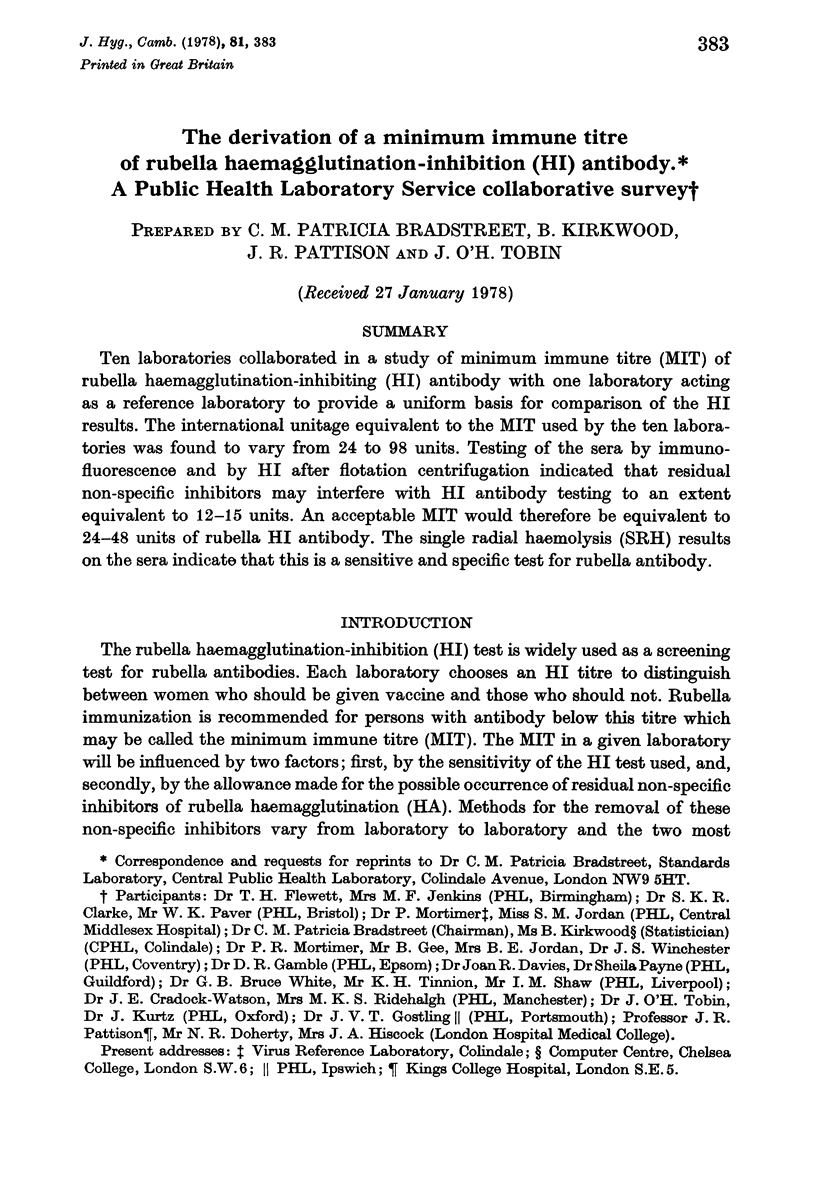
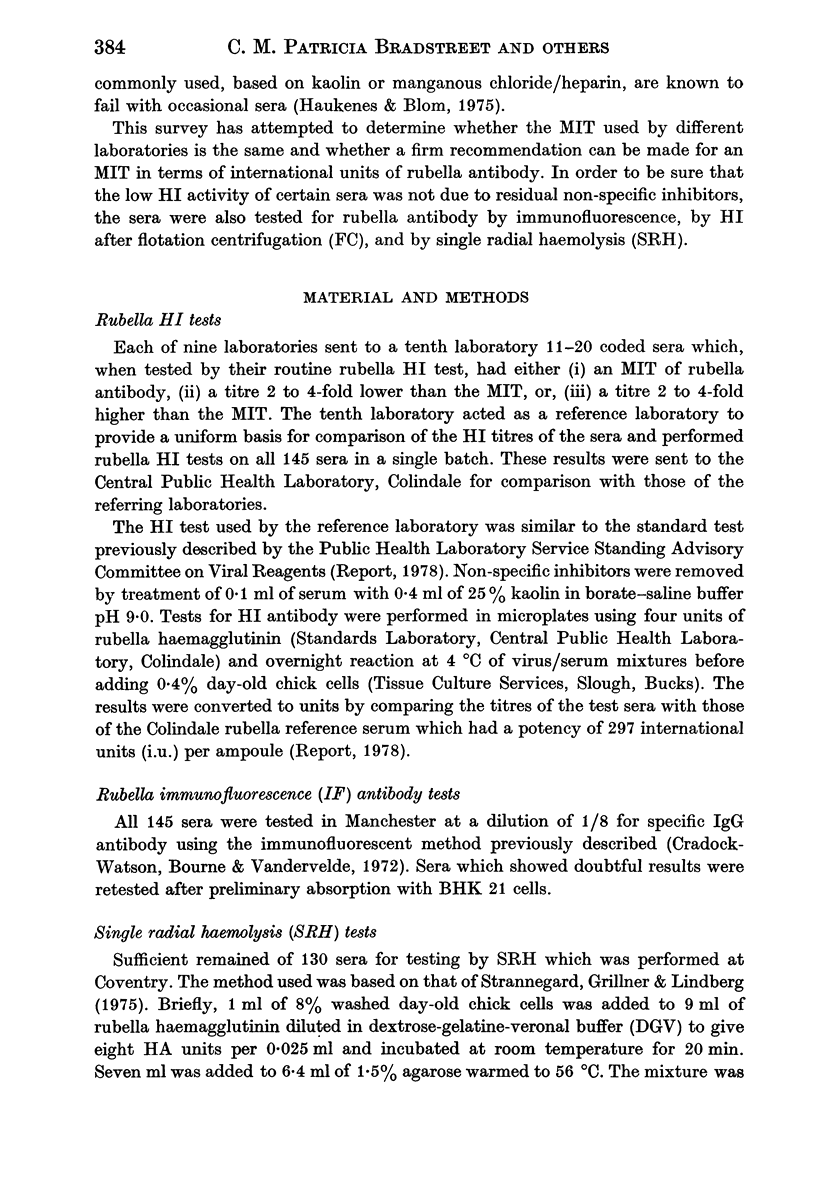
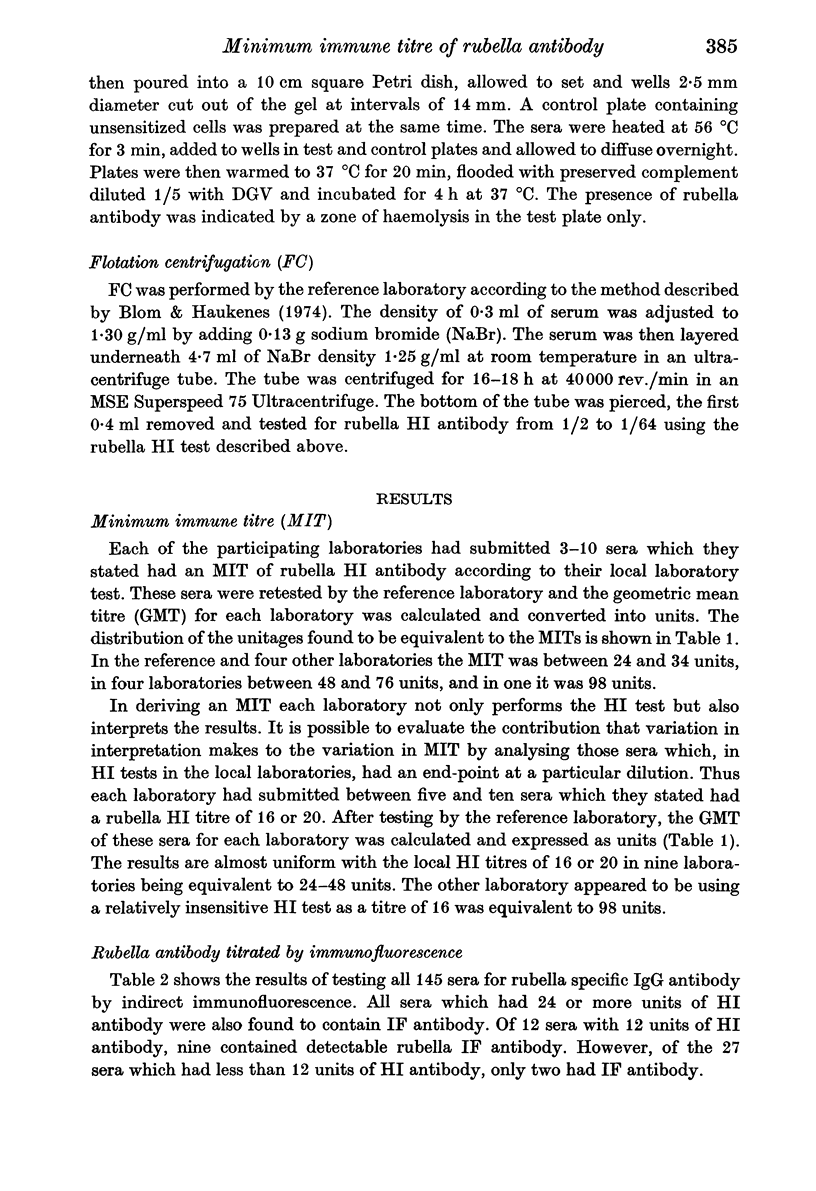
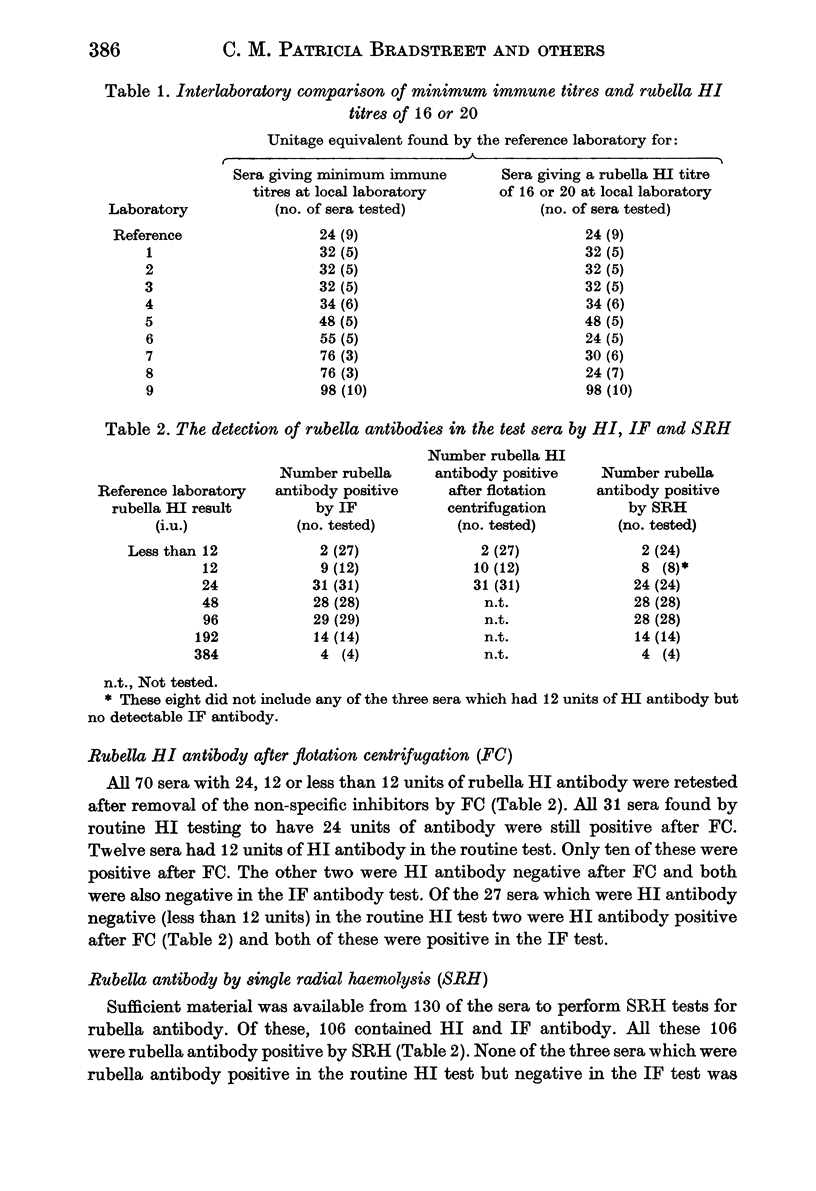
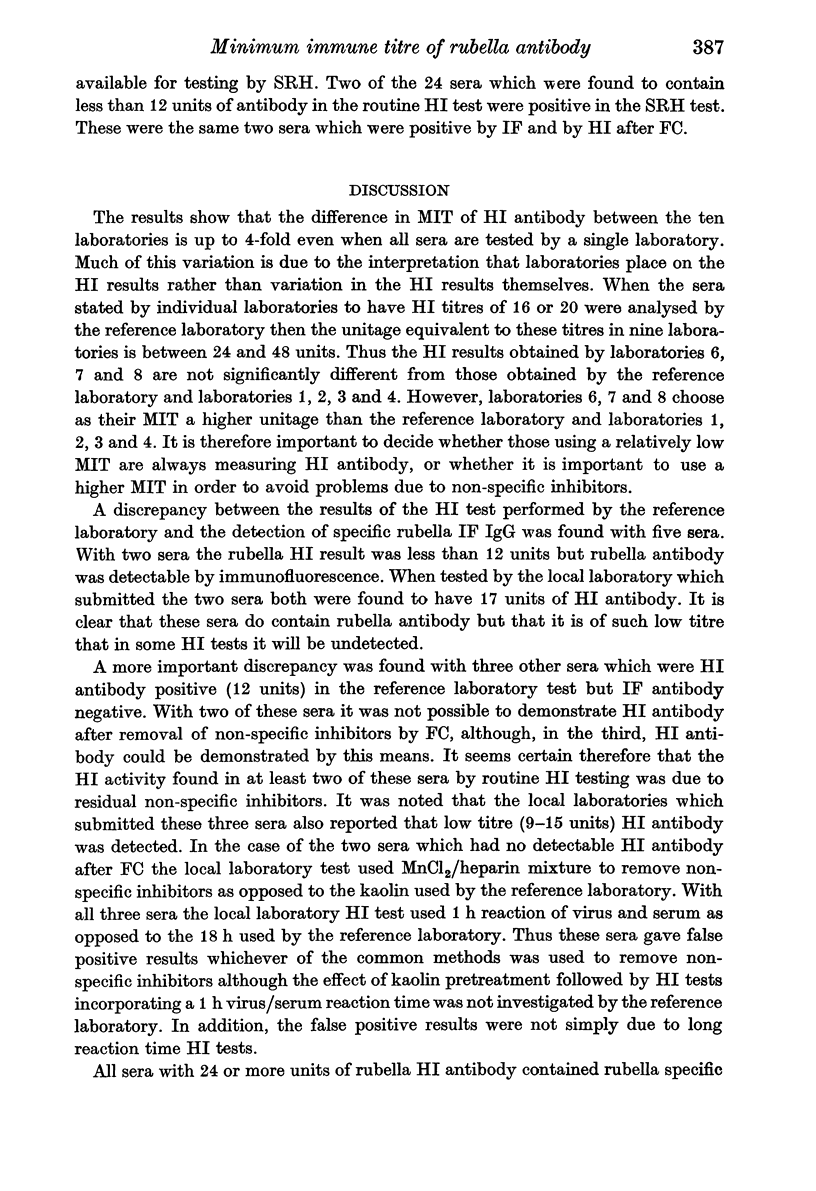
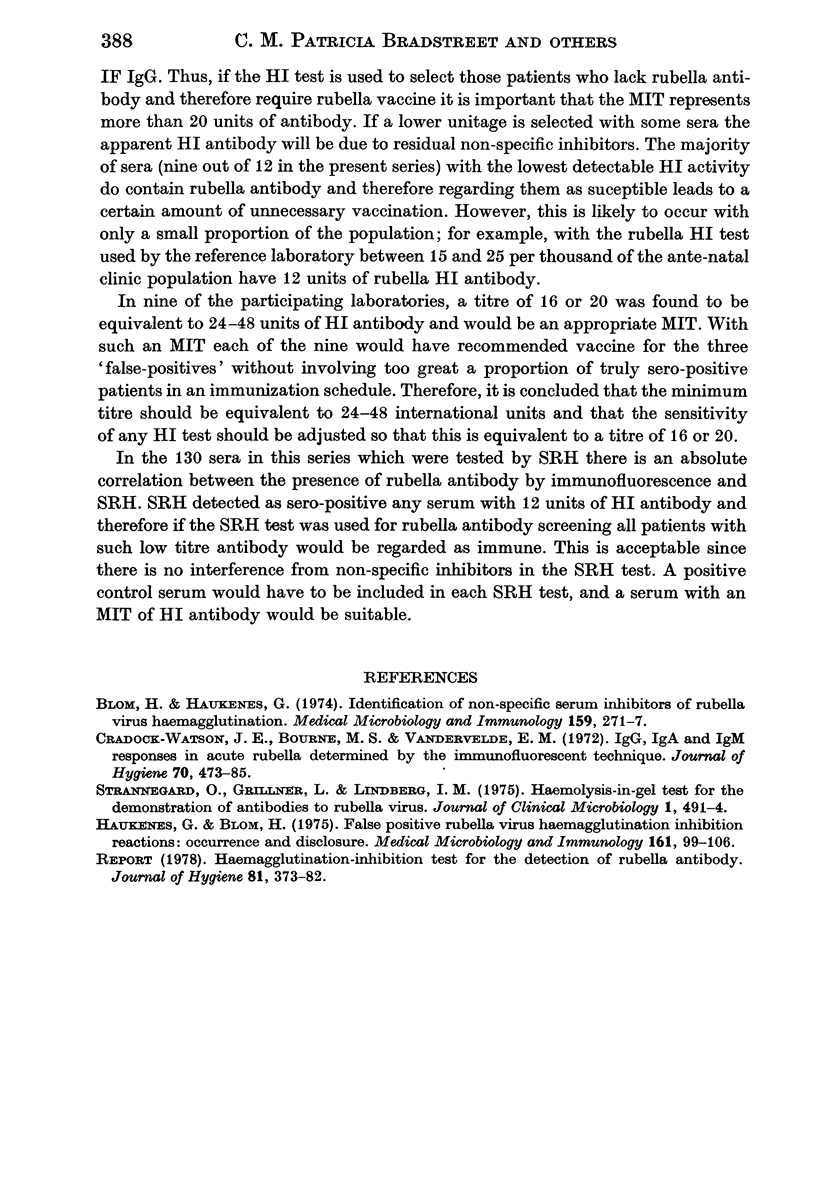
Selected References
These references are in PubMed. This may not be the complete list of references from this article.
- Blom H., Haukenes G. Identification of non-specific serum inhibitors of rubella virus haemagglutination. Med Microbiol Immunol. 1974 Jun 19;159(4):271–277. doi: 10.1007/BF02123736. [DOI] [PubMed] [Google Scholar]
- Cradock-Watson J. E., Bourne M. S., Vandervelde E. M. IgG, IgA and IgM responses in acute rubella determined by the immunofluorescent technique. J Hyg (Lond) 1972 Sep;70(3):473–485. doi: 10.1017/s0022172400063063. [DOI] [PMC free article] [PubMed] [Google Scholar]
- Haukenes G., Blom H. False positive rubella virus haemagglutination inhibition reactions: occurrence and disclosure. Med Microbiol Immunol. 1975;161(2):99–106. doi: 10.1007/BF02121750. [DOI] [PubMed] [Google Scholar]
- Strannegård O., Grillner L., Lindberg I. M. Hemolysis-in-gel test for the demonstration of antibodies to rubella virus. J Clin Microbiol. 1975 Jun;1(6):491–494. doi: 10.1128/jcm.1.6.491-494.1975. [DOI] [PMC free article] [PubMed] [Google Scholar]


